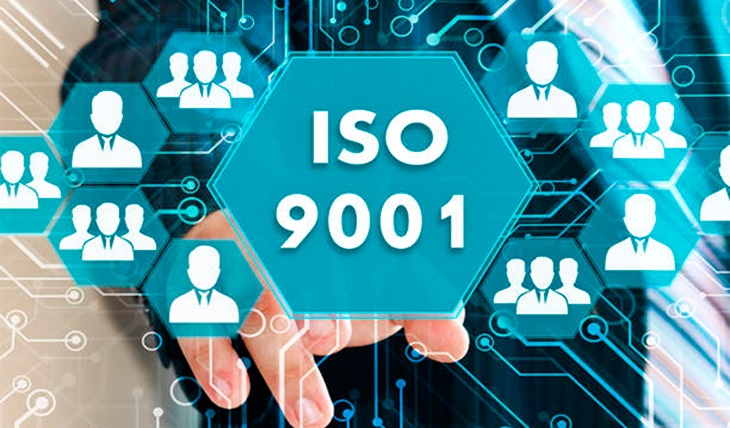ISO 9001
 ISO 9001 is an internationally recognized standard for Quality Management Systems (QMS). It is part of the ISO 9000 family of standards, which provide guidelines and tools for businesses and organizations to ensure they meet customer and regulatory requirements while continuously improving their products and services.
ISO 9001 is an internationally recognized standard for Quality Management Systems (QMS). It is part of the ISO 9000 family of standards, which provide guidelines and tools for businesses and organizations to ensure they meet customer and regulatory requirements while continuously improving their products and services.
ISO 9001 is used by a wide range of organizations, from small businesses to large corporations, across various industries. Achieving ISO 9001 certification signifies an organization's commitment to quality management, which can lead to improved customer satisfaction, operational efficiency, and competitiveness. Certification is typically obtained through a third-party audit, where an external organization assesses whether the QMS meets ISO 9001 requirements.
Key aspects of ISO 9001:
- Customer Focus: ISO 9001 emphasizes the importance of meeting and exceeding customer expectations. This involves understanding customer needs, monitoring customer satisfaction, and responding to customer feedback.
- Process Approach: It promotes the use of a process-based approach to managing an organization. This involves identifying, understanding, and managing interconnected processes that contribute to the organization's effectiveness and efficiency.
- Continuous Improvement: ISO 9001 requires organizations to continually monitor and improve their processes, products, and services. This can include the use of corrective and preventive actions and a commitment to ongoing improvement.
- Leadership and Commitment: Senior management plays a crucial role in leading and supporting the QMS. ISO 9001 expects leaders to set a clear direction and demonstrate commitment to quality.
- Involvement of People: Employees at all levels should be engaged in the QMS, and their competencies and abilities should be developed to contribute effectively to the organization's success.
- Evidence-Based Decision Making: The standard encourages organizations to make decisions based on data and information rather than relying solely on intuition or tradition.
- Relationship Management: ISO 9001 encourages organizations to manage relationships with their interested parties, including customers, suppliers, and regulatory bodies, to enhance overall performance.
Quality Management System (QMS)
A Quality Management System (QMS) is a structured framework and set of processes designed to ensure that an organization consistently meets or exceeds customer requirements and regulatory standards while continually improving its products, services, and operations.
A well-implemented QMS, often in compliance with international standards such as ISO 9001, helps organizations achieve and maintain high levels of quality in their products and services. It provides a structured approach to quality management, which can lead to increased customer satisfaction, improved operational efficiency, and enhanced competitiveness in the marketplace.
ISO 9001:2015
ISO 9001:2015 is an international standard for Quality Management Systems (QMS). It is part of the ISO 9000 family of standards, which are published by the International Organization for Standardization (ISO), an independent, non-governmental international organization that develops and publishes international standards.
The ISO 9001:2015 standard outlines a framework for organizations to establish a systematic approach to managing the processes and activities that are essential to ensuring that products and services consistently meet customer requirements and expectations. It focuses on achieving customer satisfaction through the effective application of the system.
Key principles of ISO 9001:2015 include:
-
Customer Focus: Understanding and meeting customer requirements is a central focus.
-
Leadership: Top management is expected to provide leadership and create a favorable environment for achieving the organization's quality objectives.
-
Engagement of People: Involving employees at all levels is considered important for achieving quality objectives.
-
Process Approach: Recognizing that activities and related resources should be managed as a process helps to achieve the desired results more efficiently.
-
Improvement: Regularly reviewing performance and seeking ways to improve is a fundamental aspect of ISO 9001.
-
Evidence-based Decision Making: Decisions should be based on the analysis of data and information.
-
Relationship Management: Identifying and managing relationships with relevant stakeholders, including suppliers, is important for the success of the QMS.


